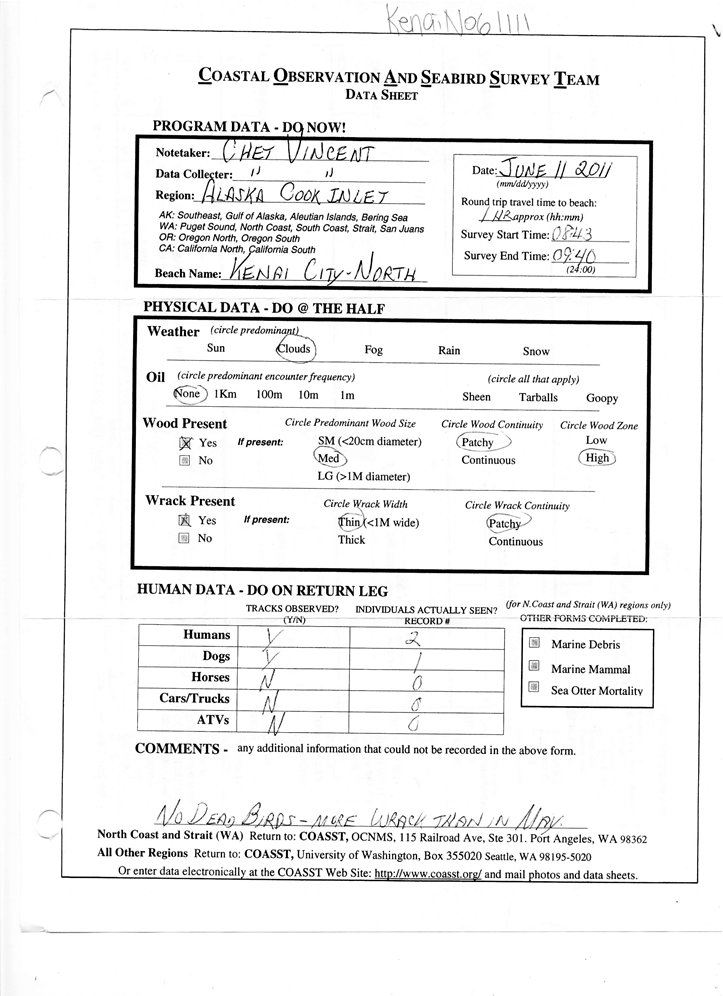COASST data depend on two things: detailed notes and high-quality photographs. So we (Scott, Jessica and An, students with COASST) went digging! Thanks to some great examples sent in by COASSTers, we’ve compiled some helpful tips.
What are “Good” Notes?
Good notes are legible and complete. If a space in the data sheet asks for information pertaining to something not present or not applicable to the situation, put a slash (/) in the box, a “N/A” for not applicable, or a “U” for unknown (can’t be determined). “N” means no, “0” means none. When a survey sheet is returned with all the boxes filled, we know it’s complete.

Data example 2: Chet’s data sheet. Note Chet’s comment at the bottom of the survey – this way we can be doubly sure someone didn’t just forget to fill out the backside.

Data example 3: Michelle’s data sheet. Again, everything filled out clearly, comments include notes on an unusual number of invertebrates found (sea stars in this example, but could include crab, clam, krill, etc)

Data example 4: Bird data from Cindy on Mad River Park North (Humboldt region). Note how all boxes are complete, a dash fills the second to last box noting that there is no distinguishable difference between Brown Pelican males and females.
What are “Good” Photographs?
Good photographs include three simple things 1) Specimen/bird/bird part(s): make sure the whole specimen fills the frame 2) Scale: black and yellow photo ruler placed near the bird for scale! (for most, included on the top of the chalkboard) 3) Chalkboard/slate: record the beach name, date of survey, cable tie number (Tag ID#) on the chalkboard (if possible, the species ID and bird number as well)
2) and 3) above are found in each COASST volunteer toolbox, 1) you’ll have to find on your own!
Photographers also pay attention to 1) Light (enough light, flash used in low-light conditions, no photographer shadows (check out “Here Comes the Sun” blog), bird stands out against background 2) Camera/camera settings/photographer movement (photos taken on high resolution setting, “beach scene” setting is chosen on bright days, photographer is stationary, camera is positioned over bird, camera lens is dry)




On days with no dead birds found, I like the idea of writing “no dead birds” on the front of the sheet in the notes. I will do so from now on, as well as continue to write “no dead birds” on page 2. (My beach is urban, and although it is a lovely survey, I never get to mark any dead birds!)
I’m glad you found this tip helpful! No bird surveys are still very important to our dataset and help establish the baseline (even if it’s zero!).